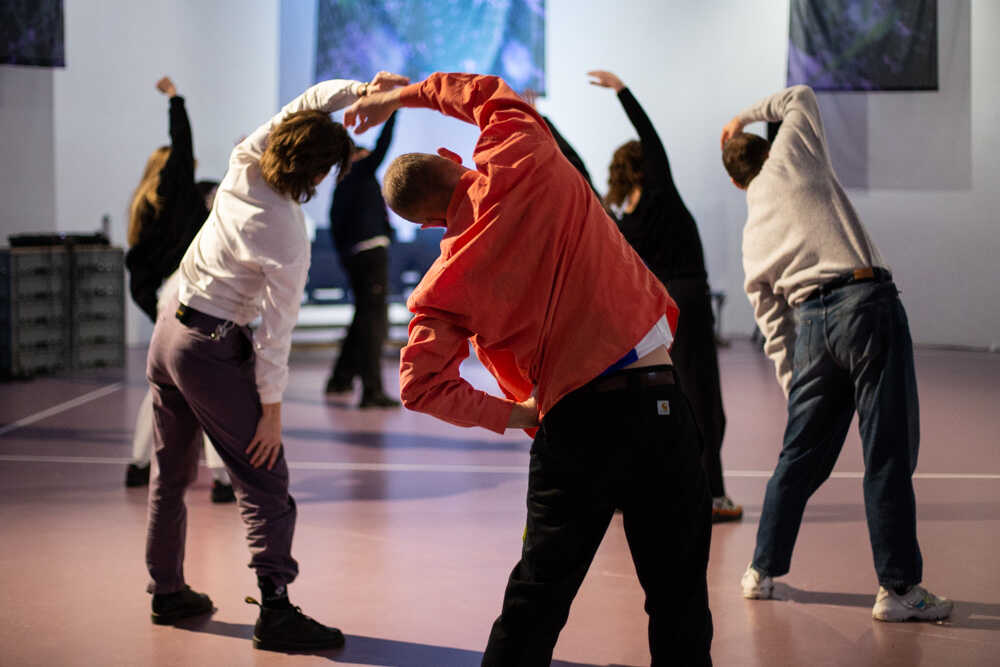Gabriel Fontana
With the blow of a whistle, Gabriel Fontana’s design practice changes the game for sports players and social discourse. After graduating from the Social Design Masters at Design Academy Eindhoven in 2018 with his project Multiform, Fontana has gone on to collaborate with numerous local schools, internationally renowned museums such as MoMA and a global sports brand. By redesigning the way that sports is played as a binary and conquest oriented social practice, Fontanas practice has seen great success, culminating in the awarding of the Pierre Keller award in 2023, as well as a nomination for the Dutch Design Awards in 2023, the Rotterdam New Talent Award in 2018 and Paris Design Forum in 2019.

Sitting down with independent curator, writer and DAE alum Tiiu Meiner, Fontana shares insights into his design methodologies and experiences collaborating with a variety of social contexts and groups.
Tiiu Meiner: What interested you in social design and why do you think sports is such a powerful lens to view society through?
Gabriel Fontana: My interest lies in dismantling existing social dynamics to cultivate empathy and inclusivity. Sports, serving as a microcosm of society, embodies many of our dominant norms and values. However, traditional sports design has primarily focused on aesthetics and athleticism. Recognizing the importance of the social aspect of sports, I believe in using design to address contemporary social issues and drive positive change.
This belief inspired my project Multiform, which bridges design and social theories, acknowledging how physical environments influence social interaction. In Multiform, participants compete in three teams while wearing specially designed sports outfits that change throughout the game. This shift in attire signifies a reorganisation of team compositions and sizes, impacting the social dynamics experienced by each player.
Through proposing new teams, games, activities, and events, I aim to reinvent sports to be more inclusive, transformative, and reflective.
TM: How does the element of competition in sports and society influence the way we see the world? Is competition a good or a bad thing?
GF: In sports, the traditional setup of fixed teams often reinforces a binary mindset, reinforcing ‘othering’ behaviour and divisive gender dynamics. In my work, I’m developing new game formats that challenge these norms. By creating games with constantly evolving teams, I aim to foster inclusivity and diversity within sports, moving away from rigid identities.
Competition in sports isn’t inherently bad; it can be motivating. However, when it becomes the sole focus —as it often does—, it overshadows other important aspects. I believe sports should promote inclusivity, personal development, and community connections, going beyond just winning or competition. That’s why exploring the broader functions of sports and physical education in my work is so important to me.

“I believe sports should promote inclusivity, personal development, and community connections, going beyond just winning or competition.”
TM: How did your time at DAE shape your practice and how did that change after graduating from design academy?
GF: At DAE, I expanded on my previous design education from France, which was somewhat traditional and narrow. I collaborated with fellow students to conduct numerous trial games, infusing them with critical social theories like queer theory, which I was studying at the time. This led to the creation of my graduation project Multiform.
Through Multiform, I started collaborating with local municipalities and schools. During this time, I noticed how much need there is to address the perception of physical education classes as unwelcoming and exclusionary, especially among young minority groups. Many of the social groups I engaged with do not always have access to art spaces where inclusivity is a central topic, so I found it very important to also bring socially progressive ideas to them in more relatable settings.
After focusing extensively on school collaborations, I felt drawn back to developing the creative and design aspects of my practice. This led me to collaborate more with art spaces. For instance, I organised projects like the “Tournament of the Unknown” at W139, which turned an exhibition space into a month-long sports tournament. I also presented my work at MoMa and Van Abbe Museum, and I will also showcase my work at the upcoming Venice Biennale’s “The Other Pavillion”, focussed on marginalised communities in the arts and questions of censoring, inclusion, and exclusion.
TM: You were also recently invited to Nike Headquarters (US) to present your project. Can you tell me why it’s important to collaborate with a sports brand as a social designer?
GF: Presenting at Nike showed me the potential for broader application of my work in daily life contexts beyond cultural sectors. It was surprising to see how I had internalised limiting beliefs about where my work belonged. Now, I’m more open to engaging with industries like sports, despite acknowledging their complexities. For example, I’ll facilitate workshops during the upcoming Paris Olympic Games, despite social and ecological criticism of the event. It’s about finding ways to engage while being aware of the challenges and addressing them.
TM: What advice do you have for young designers wishing to make a career as a social designer?
GF: In social design, working together is crucial. Projects can become quite complex so find people with different viewpoints and skills to handle projects well. Don’t limit yourself to the traditional art and design bubbles— engaging with different communities and social settings helps build stronger connections and more meaningful conversations. Also, remember to carefully document your work and also ask participants for feedback to understand how it’s being perceived or making a difference. Lastly, make sure to adjust how you communicate your work, depending on which context you’re working in, so your message is clear to everyone.
